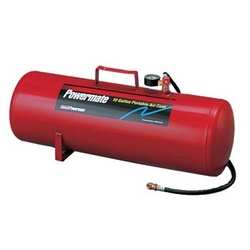 At the AOPA Expo, I had a quick
primer on what makes out tires go flat, and what to do to keep that
from happening, especially at inopportune times.
At the AOPA Expo, I had a quick
primer on what makes out tires go flat, and what to do to keep that
from happening, especially at inopportune times.
Goodyear engineer Robert Robson was well into his talk when I
managed to catch up, but I noted that he stressed that the main
reason tires go flat is... that they're underinflated. An
underinflated tire can break down internally in a surprisingly
short time, due to the inordinate amount of heat that excess
flexing causes. When a tire has too little air in it, its sidewall
and tread flex more than they should, and that extra work makes
short work of the chemistry that keeps the air inside.
OK -- so let's have a look at some causes of underinflation. As
summer becomes a memory, it wouldn't hurt to reflect on the notion
that air contracts in cold. In fact, Mr. Robson noted, a good rule
of thumb to use is that, for every 5 degrees (Fahrenheit) drop in
temperature, you'll lose about 1% of your tire pressure. So, as the
weather cools down, remember to check your tires' pressure.
If you don't do anything at all, of course, your tires will
still lose pressure. Industry standards say that a tubeless tire is
still in spec if it loses 5% of its pressure in 24 hours. That's
not typical; and tube-type tires (especially butyl tubes) will lose
less -- but check, and you won't be rudely surprised some day when
you don't have time to change that flat tire.
Speaking of tubes,
don't re-use a tube when you mount a tire. A tube stretches, and
it's just too much rubber to fit properly, if you re-use
it. Sure, you can chance it in a pinch [sorry], but the added
expense and inconvenience of tube-snafus make it worthwhile to use
a new tube. Incidentally, if you want to for special conditions, or
just because you're old-fashioned, you may use a tube in a
tubeless-type tire.
Those colorful dots on new tires actually mean something. The
red dot is at the light spot, so line that red dot up with your
valve stem. On a more-sophisticated wheel, you may see a yellow
stripe; that's the wheel's heavy spot, so line that yellow stripe
up with your red dot, and you'll be as close as you can get,
without balancing the assembly. (A white dot means the same as a
red one, but it's used on a tube-type tire.)
When you put that new tire on, remember that it, too, will
stretch, so check that inflation twelve hours after you first bring
it up to pressure. Oh -- and if a tire's unloaded, it will
typically show pressure about 4% lower than if it's loaded, so
remember to check your new tire's pressure on the airplane. That's
where you use it; that's where you should check it.
 Tires, even those that are so
typically underloaded on our little GA airplanes, need their air.
In fact, Robson recommends removing the tire, if you note that its
pressure is less than 90% of where it should be, and you have run
on it. [That's one more reason to check tire pressures on your
preflight. If you haven't stressed an underinflated tire,
you can usually just pump it up to proper pressure, roll it a way
under load to remove any flat spots caused by sitting, and fly it.
If you wait until it's been damaged, all you can do is replace it
--ed.]
Tires, even those that are so
typically underloaded on our little GA airplanes, need their air.
In fact, Robson recommends removing the tire, if you note that its
pressure is less than 90% of where it should be, and you have run
on it. [That's one more reason to check tire pressures on your
preflight. If you haven't stressed an underinflated tire,
you can usually just pump it up to proper pressure, roll it a way
under load to remove any flat spots caused by sitting, and fly it.
If you wait until it's been damaged, all you can do is replace it
--ed.]
Besides neglect (underinflation), FOD is the next most-common
cause of tire failure, so stay out of the nails, safety wire,
broken parts, and junk that's often lurking just alongside the taxi
areas.
Just as the key to success in retail selling is often "location,
location, location," Robert reminded us, the secret to long life
and predictable performance for tires is "inflation, inflation,
inflation."
 ANN's Daily Aero-Term (05.17.24): Very High Frequency
ANN's Daily Aero-Term (05.17.24): Very High Frequency ANN's Daily Aero-Linx (05.17.24)
ANN's Daily Aero-Linx (05.17.24) ANN FAQ: Submit a News Story!
ANN FAQ: Submit a News Story! Classic Aero-TV: ANN Visits Wings Over The Rockies Exploration Of Flight
Classic Aero-TV: ANN Visits Wings Over The Rockies Exploration Of Flight Airborne Affordable Flyers 05.16.24: PRA Runway, Wag-Aero Sold, Young Eagles
Airborne Affordable Flyers 05.16.24: PRA Runway, Wag-Aero Sold, Young Eagles




